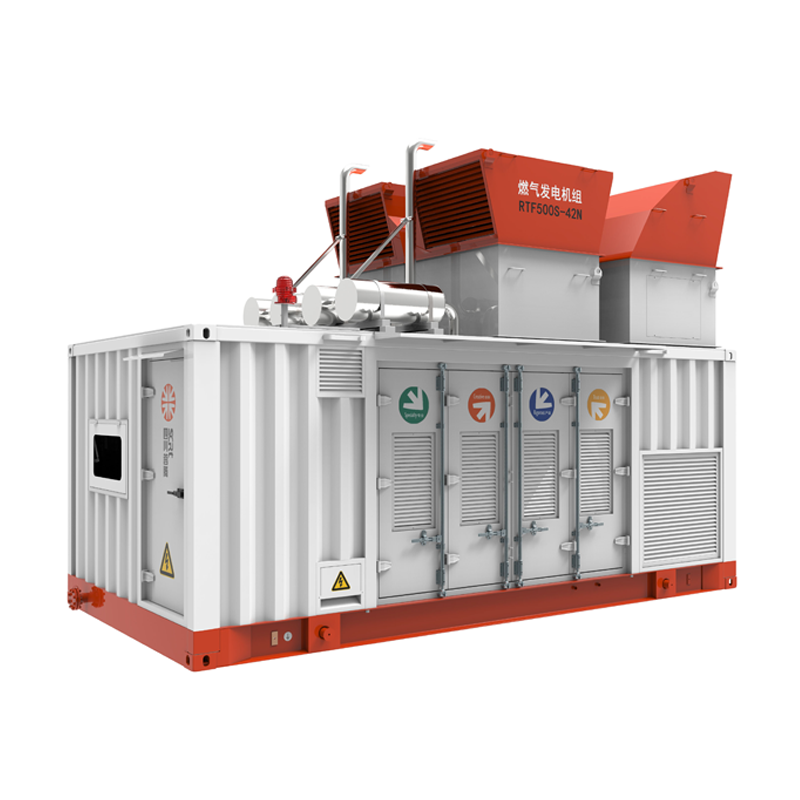-

250KW sound proof natural gas generator
● Fuel gas: natural gas, biogas, biomass gas
● Clean energy and friendly to the environment
● Low procurement and running costs;
● Easy maintenance and easy access to spares
● Fast maintenance and overhaul service
● Different options to meet your requirements:
1. Soundproof system
2. Heat recovery -

500KW sound proof natural gas generator
● Fuel gas: natural gas, biogas, biomass gas
● Clean energy and friendly to the environment
● Low procurement and running costs;
● Easy maintenance and easy access to spares
● Fast maintenance and overhaul service
● Different options to meet your requirements:
1. Soundproof system
2. Heat recovery -

134~200 TPD LNG liquefaction plant
● Mature and reliable process
● Low energy consumption for liquefaction
● Skid mounted equipment with small floor area
● Easy installation and transportation -

Natural Gas Hydrogen Production Plant
In order to make the boiler feed water meet the requirements, a small amount of phosphate solution and deoxidizer shall be added to improve the scaling and corrosion of boiler water. The drum shall continuously discharge part of boiler water to control the total dissolved solids of boiler water in the drum.
-

500kg natural gas hydrogen production unit
The natural gas outside the battery limit is first pressurized to 1.6Mpa by the compressor, then heated to about 380 ℃ by the feed gas preheater in the convection section of the steam reformer, and enters the desulfurizer to remove the sulfur in the feed gas below 0.1ppm.
-

Rongteng hydrogen production unit for natural gas
The hydrogen production process of natural gas mainly includes four processes: feed gas pretreatment, natural gas steam conversion, carbon monoxide conversion and hydrogen purification.
-

13 TPD Mini skid mounted LNG Liquefaction plant
● Mature and reliable process
● Low energy consumption for liquefaction
● Skid mounted equipment with small floor area
● Easy installation and transportation
● Modular design -

Tailored solution for Natural Gas Liquids Recovery from Chinese supplier
The value of natural gas liquids, such as ethane and propane, is increasing due to growing global demand for petrochemical feedstock, heating and power. Rongteng natural gas liquids (NGL) recovery solutions are specialized to maximize recovery while providing you with high operational flexibility and greater returns on plant investments.
-

Custom LPG recovery skid liquefied petroleum gas recovery plant
LPG is liquefied petroleum gas, which is produced when refining crude oil or volatilized from the process of oil or natural gas exploitation. LPG is a mixture of oil and natural gas formed under appropriate pressure and exists as a liquid at room temperature. LPG (Liquefied Petroleum Gas) is widely used as alternative fuel for cars, but is also suitable as a chemical feedstock. It consists of propane and butane (C3/C4). For the recovery of LPG/C3+ the Engineering Division offer an absorber pr... -

Tailored 1~6 mmscfd LPG recovery facility form Chinese firm
Why to recover natural gas liquids: Improve the quality of natural gas, reduce hydrocarbon dew point and prevent liquid hydrocarbon condensation in pipeline transportation; The recovered condensate products are important civil fuel and chemical fuel; The comprehensive utilization rate of resources is provided, which has good economic benefits.
-

8MMSCFD Liquefied Petroleum Gas recovery skid for natural gas
Why to recover natural gas liquids: Improve the quality of natural gas, reduce hydrocarbon dew point and prevent liquid hydrocarbon condensation in pipeline transportation; The recovered condensate products are important civil fuel and chemical fuel; The comprehensive utilization rate of resources is provided, which has good economic benefits.
-

2 MMSCFD LPG recovery plant from China Rongteng company
The raw natural gas enters the inlet separator to filter out mechanical impurities and separate the free water, then enters the compressor after precision filtration by the dust filter, and is cooled to 40 ~ 45 ℃ by the cooler of the compressor itself, and then separates some water and heavy hydrocarbons (in case of excessive heavy components), and then enters the dehydration unit for deep dehydration.

Phone

